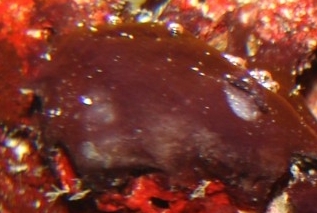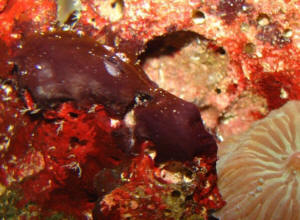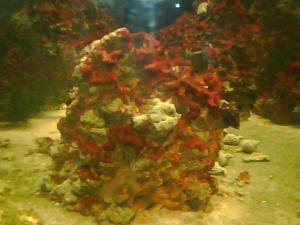|
FAQs on Controlling Cyano/Blue-Green Algae
16
Related FAQs: Control of Cyano/Blue-Green Algae 1,
Cyano Control 2, Cyano Control 3, Cyano
Control 4, Cyano Control 5,
Cyano Control 6, Cyano Control 7, Cyano Control 8, Cyano Control 9, Cyano Control 10, Cyano Control 11, BGA Control 12, BGA
Control 13, BGA Control 14,
BGA Control 15, BGA Control 17, BGA
Control 18, BGA Control 19,
BGA Control 20, & BGA Identification,
Algae Control, Marine Algicide Use, Nutrient Limitation, Marine Algae Eaters, Culturing Macro-Algae; Controlling: Red/Encrusting Algae, Green Algae, Brown/Diatom
Algae
Related Articles: Blue-Green
"Algae"/(Cyanobacteria), Algae Control, Marine Maintenance,
Nutrient Control and Export,
Marine Scavengers, Snails, Hermit
Crabs, Mithrax/Emerald
Green Crabs, Sea Urchins, Blennies, Algae
Filters, Ctenochaetus/Bristle Mouth
Tangs, Zebrasoma/Sailfin Tangs,
Skimmers, Skimmer Selection, Marine Algae, Coralline Algae, Green Algae, Brown
Algae, Diatoms, Brown Algae,
|

|
 |
New Print and
eBook on Amazon
Marine Aquarium Algae Control
by Robert (Bob) Fenner
|
|
Cyano Bacteria, sponge ID?
9/29/08 Hello, <Hello> I have done a lot of
reading of past questions asked of you guys. My initial questions
was, What is growing on my live rock! I initially thought it was
algae. <You were right> From the reading, I now think
it might be a sponge. <Understandable, but it is algae>
I have attached a picture to help me identify this growth,
it is the maroon area. <From the picture it looks like Cyano
bacteria.> It is only on live rock and it is in four
scattered spots in my 72 gallon reef tank. It appears to grow
where old corals or zoo's have died off. I try removing it
and it is like a blanket with a gray color under it. < The
gray under it is most likely die off due to no light and detritus
build up under the slimy sheet.> After I peel it off it
grows back in a few days. The tank has been established for 3
years, water tests are fine, only R/O water is used, bulbs are a
bit old and could use replacing but I also have metal halides
which are still in good life span, I have reduced feeding to
reduce nutrient level, I do frequent water changes, I have a
protein skimmer running, and I added more water flow by having a
pump blow directly at a clump of it with no luck. Any help would
be greatly appreciated as it is starting to grow over some
corals. Thanks! <Read up on it here
http://www.wetwebmedia.com/bluegralgae.htm? And here
http://www.wetwebmedia.com/cyanocontrolfaqs.htm You could also
try Red Slime remover by Chemi Clean. I've used it with
success.> Melinda
<Regards, Jessy>
|
 
Good eye Jes. RMF. |
|
Possible Red Cyano, reading
9/21/08 Hi there, I have a 300 gal i have had up and
running almost a year now. I have coralline algae growing all
over the walls but have failed to get much on the rocks. A lot of
red algae(or so i thought) has grown all over the rocks. <Mmm,
red-colored... this is BGA> Which my Koran seems to nip some
off, and he loves the dried packaged red algae. Upon looking at
your web site i fear it may be red Cyano. Should i syphon this
off, it seems to comes off easily with a swirl of water close by.
<A good idea to remove as much as practical during routine
water changes, but more important to set upon a plan to
eliminate/deny here> My water parameters are usually great,
the ph drops somewhat sometimes, but usually around 8 to 8.5.
<... this is a logarithmic measure... this difference is
HUGE> Nitrates are usually 0 or very low. <... all being
absorbed by the Cyanobacteria...> I don't have the correct
lighting right now just some fluorescents. <Part of the cause,
yes> I only have two fish, a Koran and a maroon clown. Lots of
hermits and snails. Will the coralline(pink purple white) take
over the red slime? <Mmm, if conditions favour it> OR any
other bad algaes?? Here is a photo of a piece of rock with the
red Cyano. Also i have had a few black spots in the sand
bed(about 4" DSB) is this from improper lighting?? Thanks
for any help or suggestions, your website is great!! Thanks Dawn
<Time for you to read:
http://wetwebmedia.com/avoidingalgaeproblesm.htm and the linked
files above re BGA. Bob Fenner>
|
 |
Re: algae? Reading? 9/21/08
What should I remove to make the LPS and Montipora begin to grow??
<... Read here: http://wetwebmedia.com/cnidcompppt.htm and the
linked files above, and elsewhere on WWM re Acroporids, their systems,
feeding...> What is the best feeding routine and food? <... see
above> Also, you think raising the Salinity to .026 will eradicate
the slime/algae? <... please, don't write... instead, read here:
http://wetwebmedia.com/WWMAdminSubWebIndex/question_page.htm educate
yourself. B>
Interesting fact/fiction about
Cyanobacteria 9/13/08 Dear Crew, <Andy> I was
perusing Reef Central and came across a thread on the use of red slime
remover to eliminate Cyanobacteria. Whenever I see someone advocating
for its use, I try to jump in and advocate AGAINST its use, explaining
all the reasons for my opinion, directing them to WWM, etc. In any
event, one response to this thread stated that when Cyanobacteria dies,
it releases cyanide. <?> At first, I started laughing and thought
"this is a ridiculous statement"--the guy is clearly
confusing "Cyano" and cyanide. But, I did some research on
the internet and found some sites that state studies have shown that
all forms of Cyanobacteria release cyanotoxins and cyanide when they
die rapidly, such as would happen when erythromycin is used. See here
for example: http://www.alken-murray.com/Cyanobacteria.htm.
<Mmmm> Before I searched the internet, I searched WWM for
information. I found very little to confirm or debunk this statement. I
did find one post by Bob addressing a poster's question about why
his/her sea horses might appear to go limp after hanging onto and
breaking up BGA in which Bob implied/stated that the sea horse is
getting a dose of cyanide from the BGA. <Mmm, I hope not...
Cyanobacteria are known to degrade cyanide/s...> However, I also
found the following posted by Neale in the FW section: "BGA
doesn't kill fish. The idea that it is poisonous comes from
non-biologists confusing the name of the group of bacteria
(Cyanobacteria) with the word "cyanide". In fact the
"cyan-" part of the name refers merely to the colour. There
are in fact some fish that eat the stuff, as well as snails and other
invertebrates. Anyway, it is best dealt with by balancing the
tank[.]" <Mmm, and I do disagree with this statement. A cursory
look even on the Net will show that BGA decomposition does release
deadly materials> If Cyano does in fact release cyanide into a
system when it dies rapidly, this is just one more reason to never use
this product. Can anyone at WWM confirm this or offer any further
insight into this? <Mmm, cyanides are any triply bonded
carbon/nitrogen... attached to other matter... There may be
"some" cyanide in Cyanobacteria, but I warrant very little...
the commonality with the names "Cyan", meaning blue is a bit
confusing perhaps... but these bacteria (and indeed ourselves) have
biochemical mechanisms for degrading cyanides within our tissues, not
producing, or releasing such> If this is true, you might want to
edit the article on BGA to make this clear to all potential users of
red slime remover to drive home the point that this product is
dangerous. <These products, use is indeed dangerous... for the
general reasons stated... the release of toxic factors, and possible
rapid reduction of dissolved oxygen. What's more, their use will
not eliminate the root cause/s of BGA proliferation:
http://www.google.com/search?hl=en&rls=com.microsoft%3Aen-us%3AIE-Address&rlz=1I7PCTA&q=cyanobacteria+control+toxicity>
Take care! Andy <Bob Fenner>
Re: Toxicity of Cyanobacteria 9/13/08 Hi
Bob, <Msieu Neale> Read your FAQ answer on Cyanobacteria. I have
to confess to talking from the freshwater perspective, and so far as I
know there aren't any directly toxic forms that occur in aquaria.
Multiple species of fish consume the stuff in the wild, e.g.,
Cyprinodon spp. killifish and Ameca splendens. I would certainly agree
that a mass die-off of these algae -- or indeed any algae -- isn't
a good thing, and quite likely oxygen consumption through mass decay is
as much a threat to livestock as anything else. As for marine
Cyanobacteria, quite a few are known to be very toxic indeed,
apparently "hundreds of times" more toxic than potassium
cyanide. http://www.interciencia.org/v21_06/art01/summary.html But I
still haven't read anything that states Cyanobacteria actually
contain/produce cyanide at or above the levels present in other
photosynthetic organisms. <Mmm, yes... some are known to contain...
"some". A bunch could be discussed re aminonitriles...> As
you doubtless know, cyanide compounds are all around in the natural
world, particularly plants, most famously being quite
concentrated in peach stones and almonds. Cheers, Neale <And you,
BobF>
 |
New Print and
eBook on Amazon
Marine Aquarium Algae Control
by Robert (Bob) Fenner
|
|
|

